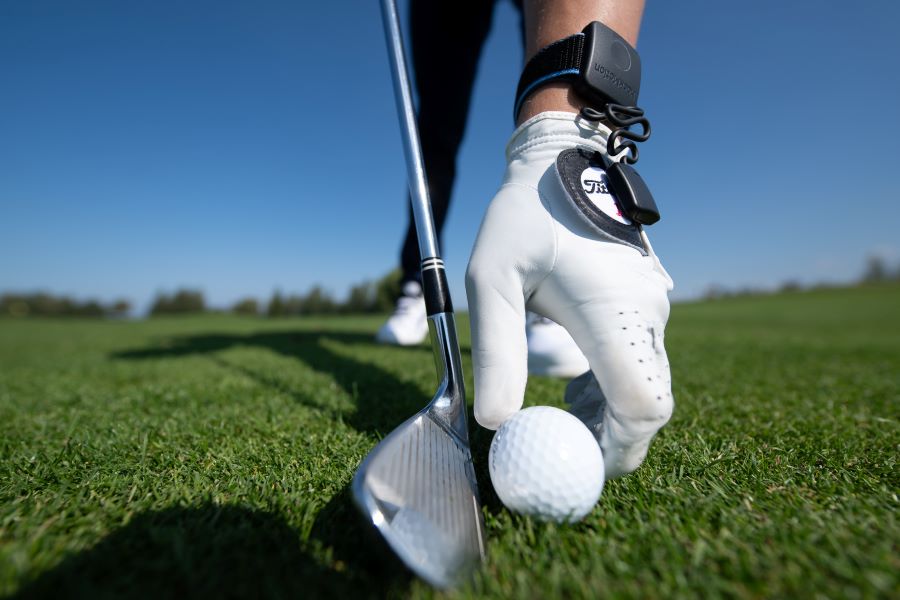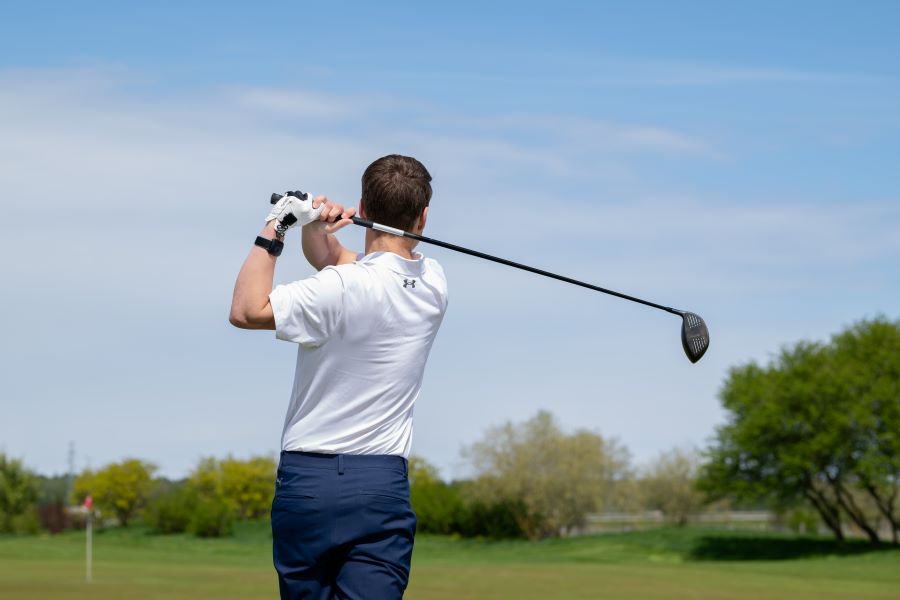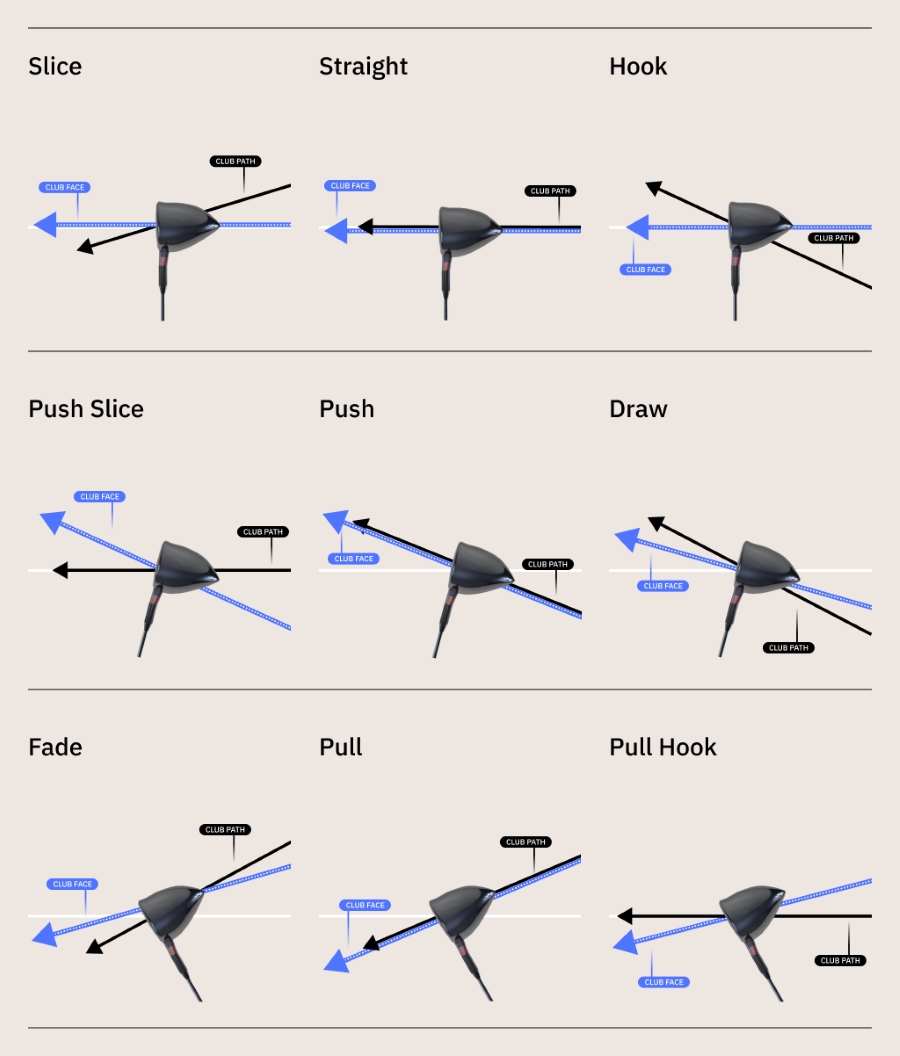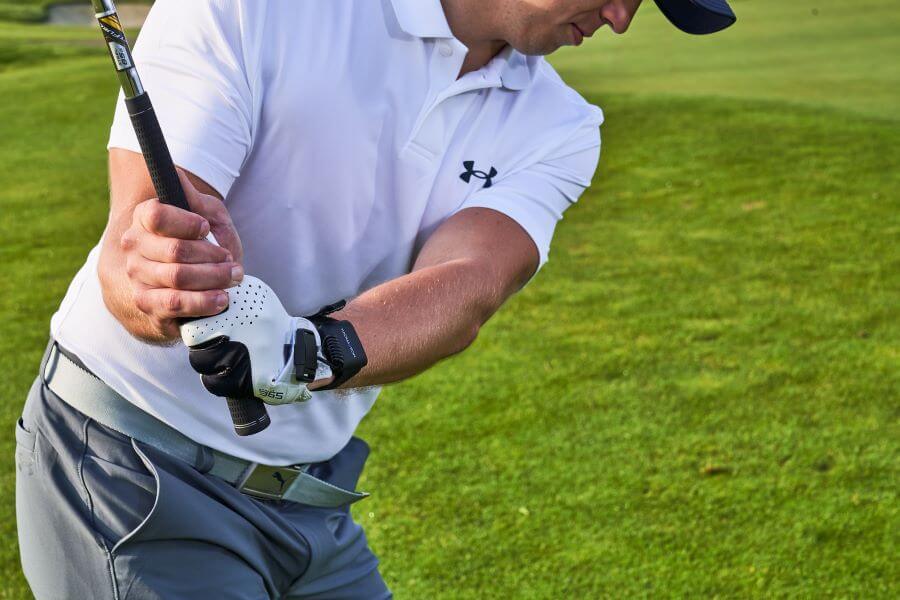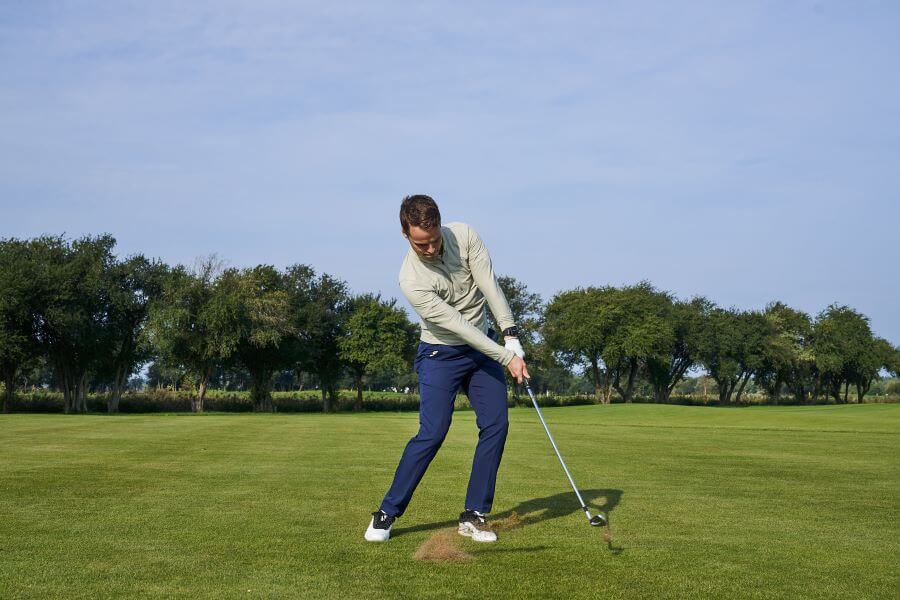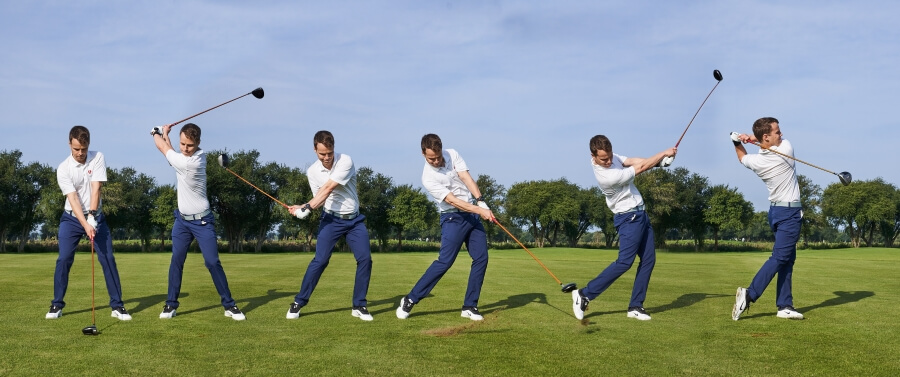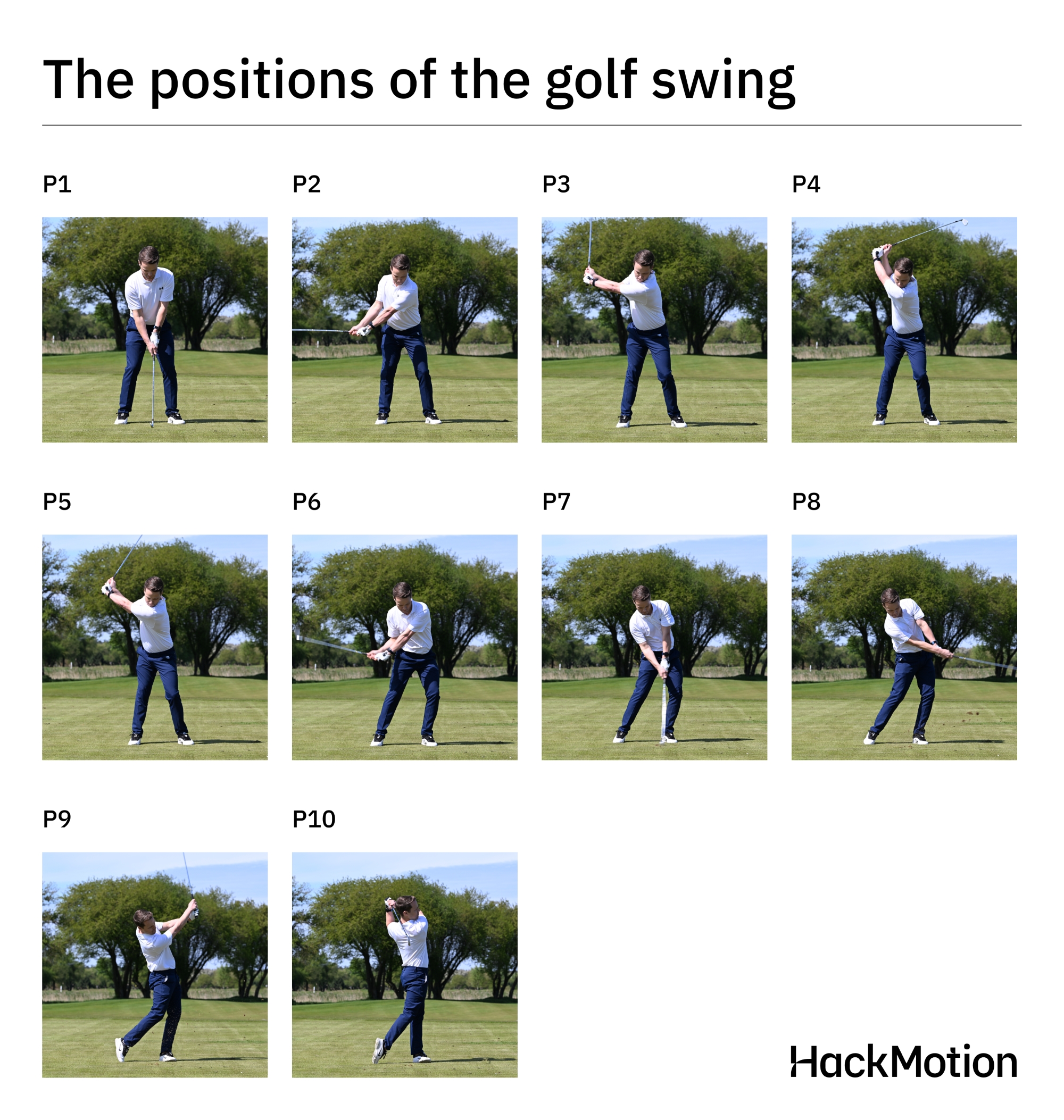17 Proven Golf Swing Tips to Actually Get Better at Golf
There are so many golf tips out there – too many, in fact. Golfers thrive on golf tips because they seem like the golden ticket to becoming a great player.
Here’s your fair warning: no single tip will make you a great golfer. However, one bad tip can make you a terrible golfer.
Here are 17 of the best golf swing tips to help you get better this season. These tips can be applied to any handicap player, from scratch to beginner.
Improve Your Golf Swing (Key Takeaways)
Don’t have time to read all 17 golf swing tips in great detail? Here are a few of the most important things to remember:
- Improving your golf swing is greatly impacted by your hands and wrists; make sure you understand the correct positions and angles.
- Good golf swing tips don’t always come from your friends or playing partners; be smart about what you listen to and who is saying it.
- Incorporating technology and instant feedback into your golf practice routine can help take your game to the next level.
- Golfers who want to improve their swing must be intentional about their movements and understand the proper positions in a golf swing.
- Great players consider all aspects of the game, from alignment to equipment and everything in between.
Contents
- 17 Golf Swing Tips You Can’t Afford to Miss
- Pay Attention to Wrist Movement and Angles in the Golf Swing
- It’s All in the Hands
- Clubface Angle is What Causes the Problems
- Left-Hand Needs to Be in Charge
- Learn to Compress the Ball
- Play with Different Stance Positions
- There is More than One Correct Swing
- Don’t Take it Easy
- In Difficult Conditions, Listen to Your Brain, Not Your Ego
- Never Swing Unless You Have a Specific Target
- Establish a Repeatable Routine (Time it!)
- Movement is Not Always a Good Thing
- The Ground is Your Friend
- Master Alignment
- Manage Your Emotions
- The Left Arm Dilemma
- Equipment Matters (It Doesn’t Need to Be New)
- FAQ
- Final Thoughts
17 Golf Swing Tips You Can’t Afford to Miss
Pay Attention to Wrist Movement and Angles in the Golf Swing
The role of the wrists in the golf swing is often misunderstood by amateur golfers. Your wrist angles control the clubface.
One of the best ways to get wrist movement worked out is to work with HackMotion.
HackMotion is a sensor worn on the wrist that analyzes your angle at setup and then how that angle changes throughout the swing. It’s like having your coach on your wrist.
As you wear the HackMotion sensor, you will get real-time feedback on what needs to be improved regarding wrist movement and the flexed position you need to have at impact.
It’s All in the Hands
If you are on the driving range this weekend, ask a few golfers about their least favorite area of the game to practice.
The answer is almost always the grip.
The golf grip is just a boring thing to practice. Whether you are new or have been around a while, it’s not nearly as exciting as trying a new takeaway or transition that is bound to lead to better ball flight and distance.
Here’s the crazy thing. The grip can be the ONLY thing you need to work on. Yes, that’s right, for some golfers, a poor grip causes all the other issues in their game.
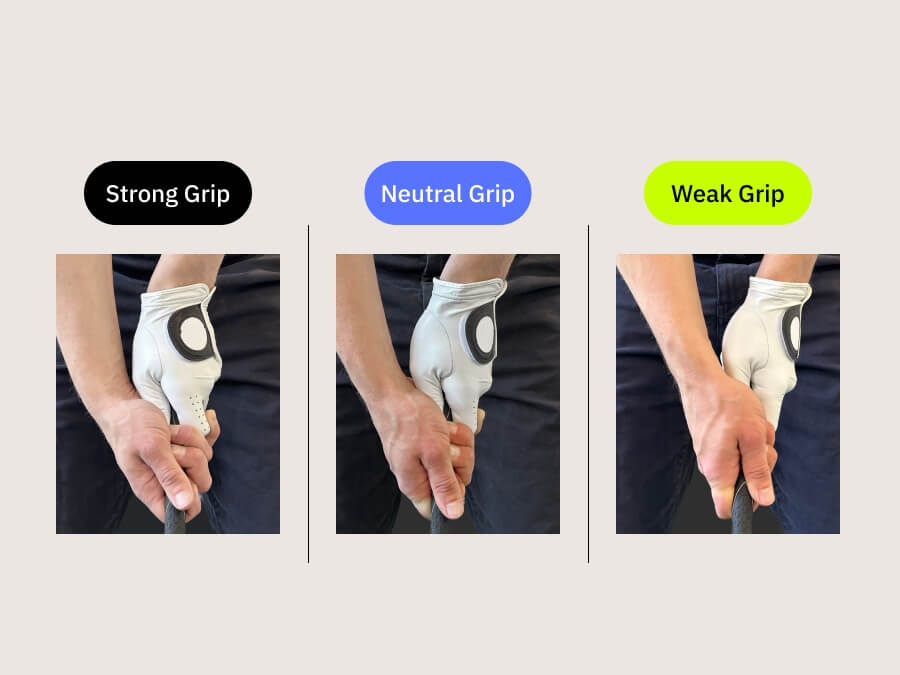
To work on the consistency of your golf grip, use the HackMotion. HackMotion measures wrist angles at setup so you can compare how you are setting your hands on the club from one swing to the next.
Also, keep in mind that although a neutral grip is recommended both a strong and weak grip can work.
Clubface Angle is What Causes the Problems
If you hit a slice, your golf club face was open at impact.
Of course, you will need to do a bit more work to figure out what causes this clubface angle, but understanding that the clubface is in charge is a key factor.
See if you can move through a few swings in slow motion to see why the clubface angle is incorrect at impact; sometimes, you can feel it almost instantly.
For many golfers, stance and setup-related issues make the clubface incorrect at impact.
Left-Hand Needs to Be in Charge
For a right-handed player, the left-hand needs to be the one in charge.
Some handsy golfers get their right hand involved in some shots, but it’s very hard to stay consistent throughout your entire round.
Take some practice swings where just the left hand is on the club. Then put the right hand on and see the difference in the feel. Let the right hand be on for the ride. The lead hand and wrist controls the clubface angle.
Learn to Compress the Ball
Want to get the ball up a little higher in the air? Want to gain a few extra yards of distance?
You must hit and compress the ball.
So many amateur golfers try to pick the ball clean right from the top of the turf. Although the golf superintendents will probably love you for this, you are doing yourself a disservice.
To get great distance and trajectory with the iron shots, you need to hit down and through the ball, taking a divot just after impact.
Overall, compressing the golf ball is the easiest to learn when chipping.
Take a narrow stance, choke down on the club a bit, and then lean a little on your left side before you take the club back. When you strike the golf ball, you will want to ensure you still have some weight leaning on that left side and are ready to strike the ball cleanly.
Take what you learn in chipping to the full swing and you’ll be able to compress your iron shots as well.
Play with Different Stance Positions
The correct position of your stance will vary depending on the club you choose.
You have to feel comfortable standing over the golf ball. Take a session at the range to experiment with golf stance positions.
You will need an alignment stick or two; if you have a launch monitor, it certainly can’t hurt to use it.
The key is to set up a stance you believe is correct. Start with feet shoulder-width apart, weight balanced, feet square, and clubface square.
Hit some shots from this position and see what the results are like. Once you have a baseline, start playing around with different positions. Only change one thing at a time.
There is More than One Correct Swing
If you take a lesson from a golf professional who tells you there is only one correct way to swing a golf club, you may want to find a new professional.
There are lots of ways to swing a golf club and still be a great player.
Even professional golfers have swing flaws and issues because they all have unique motions in their swing.
We can all agree that certain features of impact must remain the same, but there are many ways to get there.
Don’t Take it Easy
Amateur golfers often think they need to swing slower and take it easy. Don’t do this.
In fact, one of the things that I have seen to be most detrimental to golfers is when they stop accelerating through the golf ball.
You can swing within your means, practice good tempo, and not be falling over at impact. In addition, you may want to take the club back slower. These are important things to consider.
However, if you try to slow the club down as you move through the impact position, you will more than likely hit behind the ball or even hit a shot to the right.
Golf is a sport, and athletes go after the golf ball to try and get distance and accuracy. You should be doing this as well.
Learn to improve your balance and to have a better tempo in your golf swing, but never stop going after the ball.
In Difficult Conditions, Listen to Your Brain, Not Your Ego
Golf course conditions can get difficult.
Maybe your course has experienced heavy rain and is incredibly slow and wet. Maybe it’s the windy season where you are, and it’s two or three-club wind each time you step over a golf ball.
The key is to make the game easier on yourself when the course conditions become difficult.
Let’s take, for instance, a day when it is incredibly windy.
You normally hit 9 iron 120 yards, and you just hit a shot that only went 100. This is good information to have. The next time you have a 120-yard shot, chances are you will need your 7 iron.
Make this adjustment for the day, don’t worry about your total distances and averages; make the game easier on yourself and accept these quick adjustments. The golf course is different every single day and you should play it that way.
Never Swing Unless You Have a Specific Target
How often have you stood over a golf ball and just tried to hit it straight?
Hitting it straight is a good goal, but ultimately, without a target, you may never hit it straight. All golf shots need a specific target.
The “green” or the “fairway” is not specific enough. It leaves too much room for error, making it hard for you to pull off the shot.
Try to narrow your target down to a specific spot or a line that you can go after.
Don’t just aim for the center of the fairway with no specific target in mind. When approaching the green, the same thing can be said. I pick a spot on the green, not just the flag, where I want to hit my shot. Right before I take the shot, I look at the target again and make sure I’m dialed into this specific spot.
Learn more about shot dispersion in golf here.

Establish a Repeatable Routine (Time it!)
You probably already know that a pre-shot routine in golf is incredibly important. However, there is another important feature of a golf routine that people often forget; the timing of it.
Let’s say your routine is to stand behind the ball, look down the fairway, take one practice swing, and then come around the side and hit the ball.
For some golfers, this routine may take 15 seconds, and for others, it could take 30. The key is to establish a pace for your routine and then keep that pace from one round to the next.
Think about it when compared to other sports.
For instance, running. If you are a runner who can run 9-minute miles, if you suddenly switch to an 8-minute pace, it will probably throw off your stride and make you feel much less efficient at first.
The same can be said for golf. Use the timer on your phone to just get a general idea as to what feels comfortable for you, and then use it for every shot. (Even when you practice!)
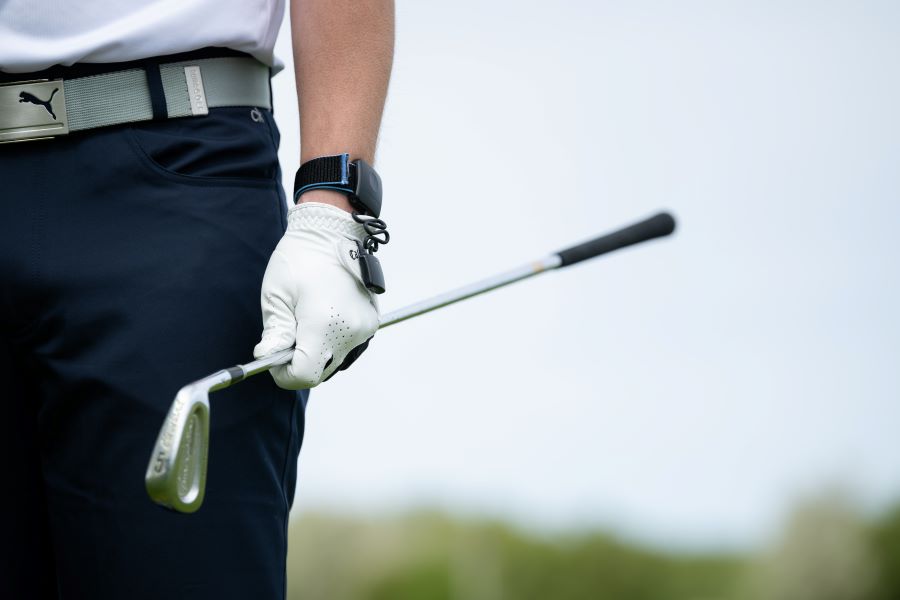
Movement is Not Always a Good Thing
There is a lot of movement in the golf swing.
Some twisting, some turning, some shifting but for some golfers, movement can be a negative.
Many players incorporate too much movement into their swing.
One of my favorite golf swing tips is to look at your swing and work on making it more efficient.
- Are there movements you don’t need?
- Does the club go past parallel at the top? Does it get you any extra speed?
- How about your footwork and your weight transfer?
- What if you stayed more stable?
- Would you be more powerful?
Take some videos of your swing and compare them to those of a professional. Look at the swings frame by frame and pay close attention to things like head and hip movement.
HackMotion can give you an idea as to how to move your hands and wrists throughout the swing to ensure you are not becoming inefficient with those movements.
The Ground is Your Friend
The ground is your friend in the golf swing.
Ground forces allow you to gain torque and power by utilizing the ground.
The legs and feet will help transmit the power you get from leveraging the ground into the body and arms to hit the ball further. The golfers that can get the most power are those that keep their weight centered in their feet.
The hips and body can coil while you are pushing down and through the ground with your impressive use of the ground.
Also, take a look at how you are utilizing the ground at impact; if your weight is on your toes or heels, it will be reflected in the divot pattern and the strike of your golf shot. I have found that golfers who work on improving the way they use the ground are much more consistent in the shots they hit on the golf course. Yes, your legs are powerful, but they generate their power by using the ground below them.
Master Alignment
If you are hitting shots that are not going straight, the first thing you should check is your alignment.
To master alignment, always practice with an alignment stick down. You can use it as a guide.
Our eyes can play tricks on us when it comes to alignment. With so many variables in the game of golf, learn to eliminate alignment as a variable and setup to the target.
Manage Your Emotions
As a golfer, you must manage your emotions even when you hit the best shot of your life. Have you ever heard stories about amateur golfers who made a hole in one and then had an 8 on the next hole.
This is a classic example of not being able to manage emotions.
When a birdie comes in, that’s great. When a bogey comes in, you move on and look for the next birdie. Golfers with poor emotional regulation have turned what should be a 1 over par hole into a 3-over par hole rather quickly.

The Left Arm Dilemma
One of the most commonly shared advice tips from one amateur golfer to another is to keep the left arm straight.
It’s so important to have that left arm straight at impact and even at times during the backswing, but there are parts in the rest of the swing that having a left arm (too) straight will cause issues.
Golfers who are thinking of their left arm straight when they stand over the golf ball are going to be more likely to lift the club with their hands and not incorporate the lower body.
You can use the left-arm straight concept when you play golf, but make sure you know when and how it will impact ball flight.
We see many golfers’ swings with too much extension at the top simply because they are focused on keeping that left arm dead straight on the entire backswing.
Equipment Matters (It Doesn’t Need to Be New)
The equipment you use will impact your golf swing. You don’t necessarily need new equipment, but you do need equipment that fits your golf game.
Going for a custom golf club fitting will help you determine which equipment fits your game. Sometimes as simple as a lie, angle adjustments can help you get a better setup and more consistency at impact.
FAQ
Here are a few common questions about the best golf swing tips.
What are 3 tips to improve your golf swing?
To improve your golf swing, create a repeatable pre-shot routine, develop a takeaway incorporating both the upper and lower body, and learn what the proper wrist position looks like at impact.
What is the best way to correct a golf swing?
The best way to correct a golf swing is to combine practice and technology. Technology like HackMotion can pinpoint issues, and then you put the time in to make sure they get corrected.
How can I truly improve my golf?
To improve golf, you will need to study and invest time. Golfers who can improve and self-correct their golf swings know what they are looking for. You must also use technology to check in on your progress and ensure you are succeeding in your improvement plan.
How many years does it take to get good at golf?
Golfers take about 3 to 5 years to feel like they are at a point where they are comfortable with the sport and playing well. For some golfers, this can happen in a year; for others, it takes a lifetime. There is a certain amount of natural ability factored in here, along with time and dedication.
How can I improve my golf swing for beginners?
Beginners should study the golf game and continue practicing and working on their game. The more you can repeat the same motion, the easier it is to get better. Beginners struggle because they have too much inconsistency in their game.
Final Thoughts
You should now feel that you have a few things you can work on in your golf swing.
The most important part of implementing any of these swing tips is to start putting in the time.
With tools like HackMotion and a bit of time at the range, your golf swing can improve faster than you likely ever imagined.





